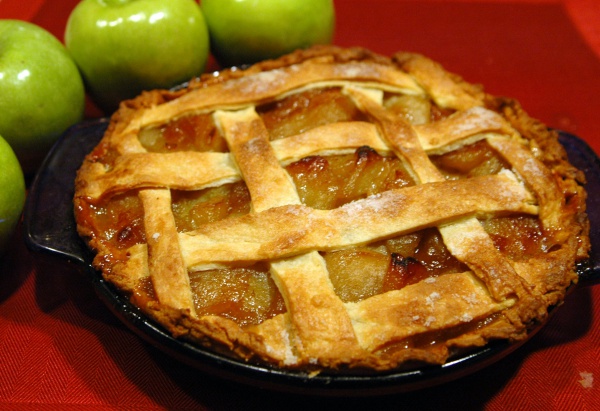Facts About Apple pie
Apple pie is a classic dessert centered around its signature ingredient: apples. This delectable treat typically features a double crust, with pastry encasing the apple filling both on top and bottom. Whether paired with whipped cream, ice cream, or even a slice of cheddar cheese, apple pie has universal appeal. You might encounter it as a deep-dish pie, adorned with a beautiful lattice top, or simply covered with a solid crust.
In the United States, apple pie transcends being just a dessert; it’s a symbol of comfort and tradition. The types of apples favored for its filling often include Braeburn, Gala, Granny Smith, and McIntosh. The filling usually comprises sugar, butter, and cinnamon, with occasional enhancements like lemon juice or nutmeg. When served à la mode, it comes with a scoop of ice cream, or in some regions, a slice of cheddar cheese is added on top for a savory twist.
Nutritionally, a store-bought apple pie consists mainly of water and carbohydrates, with some fat and protein. This dessert is not exclusive to the U.S.; it’s enjoyed globally, with each culture adding its unique spin. For instance, English, Dutch, French, and Swedish versions of apple pie incorporate distinctive ingredients and preparation methods.
Apple pie has deep roots in American history, tracing back to colonial times when settlers introduced European apple varieties to the New World. By the 18th century, it had become a cherished dessert. The phrase "as American as apple pie" encapsulates its status as a symbol of the nation's prosperity and pride.
Modern American apple pie recipes often utilize a 9-inch pastry crust filled with a spiced apple mixture. This dessert is celebrated in art and media, symbolizing American values and culture. For many, apple pie is not just a delightful treat; it’s a cherished part of their culinary heritage.

 Belgium
Belgium